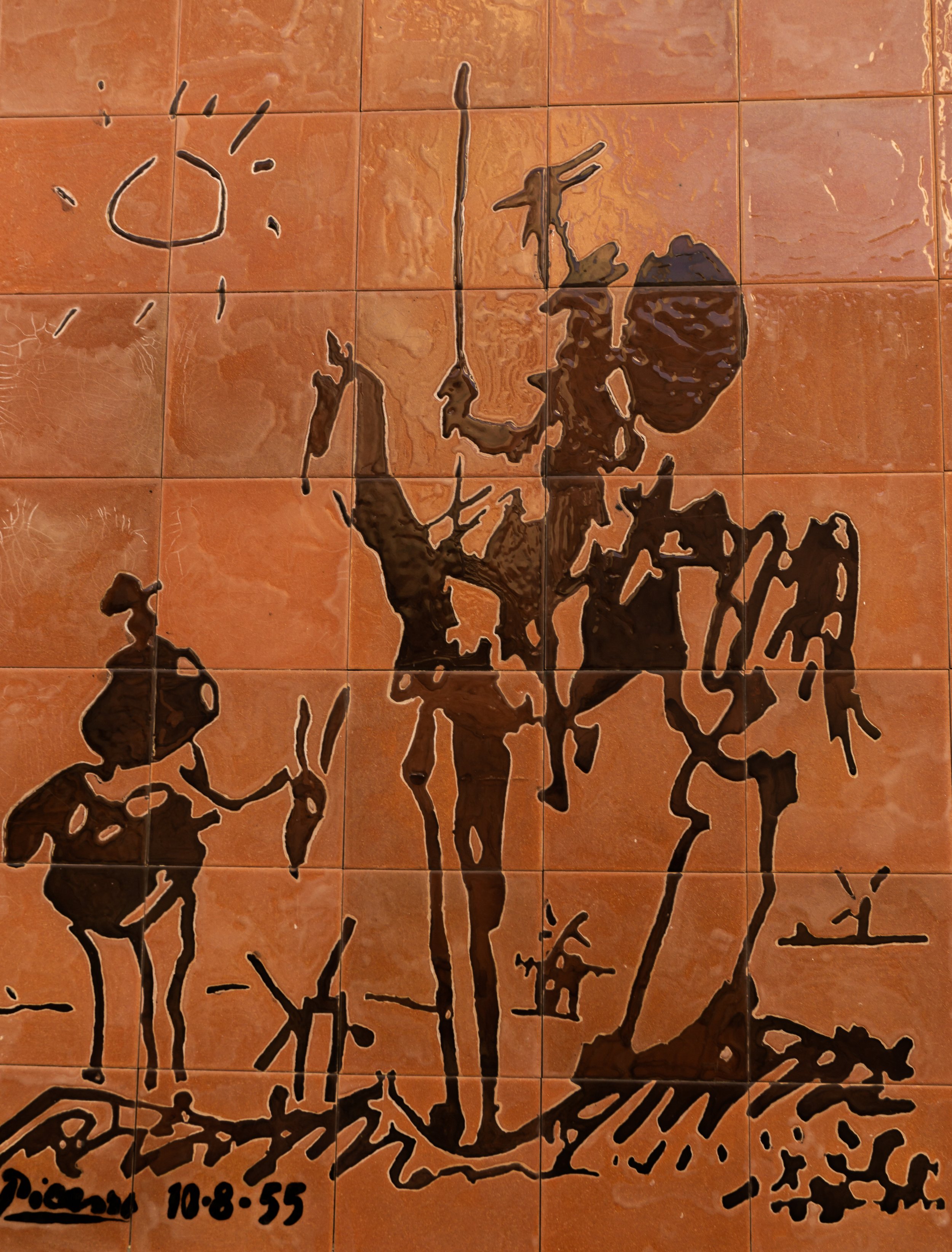Inquisition as Critique in Don Quixote
Chapter VI of Don Quixote involves a priest and a barber in the protagonist’s library, assessing his collection of books, and deciding which must be burned for the hero’s health. Miguel de Cervantes could have summarized the chapter thus: “The two men burned the books according to those they thought had infected the hero with delusions of chivalry,” but instead it goes on for five pages of careful critical assessment of several volumes. What might we make of this prolix chapter? The two ersatz literary critics, Dr. Pero Perez, a priest, and the local barber, Master Nicholas, spend the chapter delightedly condemning and pardoning various books from the collection. The chapter dramatizes the novel's relationship with both texts themselves and with the mania for chivalry that is nearly universal in its world. Chivalric romance is a genre at once lionized and reviled in the text, often at the same time. This profound ambivalence threads through the story, popping up now and again when Don Quixote’s fantasies clash too forcefully with “reality” (whatever that is). But since what befalls Don Quixote is alternately humorous, violent, and transcendent, ambivalence about the effects of literature itself forms a sort of gordian knot at the novel’s center. Far from condemning chivalric fantasy as heretical, like the priest and barber try (and perhaps fail) to do, Cervantes renders the real world as absurd and unstable—the ideal, the realist, and the “real” compete for viability in Don Quixote.
The book trial is an early example of this struggle for viability. It is staged as an inquisitional hearing, wherein the books are potential heretics, with Don Quixote’s housekeeper and niece the loudest voices for the prosecution, preferring to burn all the books as equal offenders. The niece, in fact, brings holy water and hyssop—a plant used in cleansing rituals in the Old Testament—to defang the books before destroying them, but the priest and barber insist on going through the motions of trial. Over the course of the chapter it becomes clear that their judgements are less religious than literary—for it turns out that they are as vulnerable to the lure of chivalric romance as the other characters. When the priest wants to burn the Four Books of Amadìs for being the original chivalric romance in Spanish, the barber protests that “‘it is the best of all the books of this kind ever written, and as a unique example of the art, it should be pardoned’” (Cervantes 46). Books of lesser fame and quality are criminalized. The priest sentences Felixmarte of Hyrcania to the fire not for its heretical qualities but because of “‘the harshness and dryness of his style,’” and later remarks that The Knight of the Cross should be condemned: “‘Because of the holy name this book bears,” says the priest, “one might pardon its stupidity, but as the saying goes, “The devil can hide behind the cross.” Into the fire’” (Cervantes 47). The final book saved by the priest is one whose author “had great success translating some fables by Ovid” (Cervantes 52). Far from presiding over a Christian inquisition, this priest saves and condemns books on their literary merits alone. These texts are real texts, not literary inventions. Readers are invited to laugh as Cervantes, through these men, engages in a droll send-up of others in his literary milieu, since many of these authors were contemporary to his time. In “Don Quixote and the Neuroscience of Metafiction,” Norman Holland defines metatextuality as when “the physical medium of the story becomes part of the story” (73). Metafiction lulls us into passive reading only to jolt us aware by slipping from the hypothetical to the real. In this scene we are trapped (pleasantly, I would argue) between text and metatext—just as the novel’s characters are trapped between romance and reality.
Toward the end, Cervantes intrudes indisputably into the scene, destabilizing our suspended disbelief: One of the books they hesitantly save (though they banish it, pending further assessment) is La Galatea, Cervantes’ first work, a pastoral romance. Moreover, Cervantes is apparently friends with Dr. Pero Perez. The priest thinks little of his writing but argues for quarantine rather than immolation because its author has suffered, and “‘is better versed in misfortune than verses’” (51). The layers of artifice keep building and stripping away, leaving us, the readers (bastions of the final “real”) on unstable ground. The book’s “reality” (which is really just literary realism) competes with the chivalric fantasy that infects all the characters to a greater or lesser degree. But flourishes like Cervantes being both author and a character in the book forces artistic realism to compete with our reality. Readers are caught in the cross-fire of these competing sign systems. Book-lust infects everyone in the equation: Goatherds, innkeepers, prostitutes, the priest, Cervantes, we the readers, all are presumably enchanted by the tropes of romance, and many seem to be heroes in their own chivalric tales, especially when in proximity to Don Quixote, who lends gravitas to their fancies. When he isn’t being beaten for his mania, he becomes a kind of spiritual mediator for the force of romantic idealism. The collective fantasy (on our part as well as the characters’), is a source of both tension and humor. As Steven Jaeger notes in “Book Burning at Don Quixote’s,” a narrative trick of the book’s many layers of art, idealism, realism, and the real comprise “a consistent narrative dynamic in which the highest flights of fantasy are answered by the most humiliating and physically damaging of events, not because the latter are real, but because they thwart the ideal to comic effect” (Jaeger 213). The text is often hilarious, it’s true. But humor is far from its end goal.
Holland calls Don Quixote “perhaps the greatest of metafictions, because it not only uses, but ultimately transcends, the very brain mechanisms of metafiction” (86). Don Quixote does not just create a magical sphere around himself with the power to transform innkeepers into kings, prostitutes into chaste ladies, and windmills into giants—through metafiction, he rewires the very neural networks in his readers’ brains. Jaeger notes that though Don Quixote “is not really a chivalric knight, he is the epitome of the enchanted reader, transformed by the higher world of fiction and able in particular cases to transmit its force to the world of experience” (215). Don Quixote’s magic ushers us courteously into his world; at the same time he crosses the boundary, provisionally, into ours.
His enchantment is contagious.
Works Cited
Cervantes, Miguel de. Don Quixote. Translated by Edith Grossman, Ecco Harper Collins, 2003.
Holland, Norman. “Don Quixote and the Neuroscience of Metafiction.” Cognitive Literary Studies: Current Themes and New Directions, U. of Texas P., 2012, pp. 73-88.
Jaeger, C. Stephen. “Book Burning at Don Quixote’s.” Enchantment, U. of Pennsylvania P., 2012, pp. 204–24, https://doi.org/10.9783/9780812206524.204.




